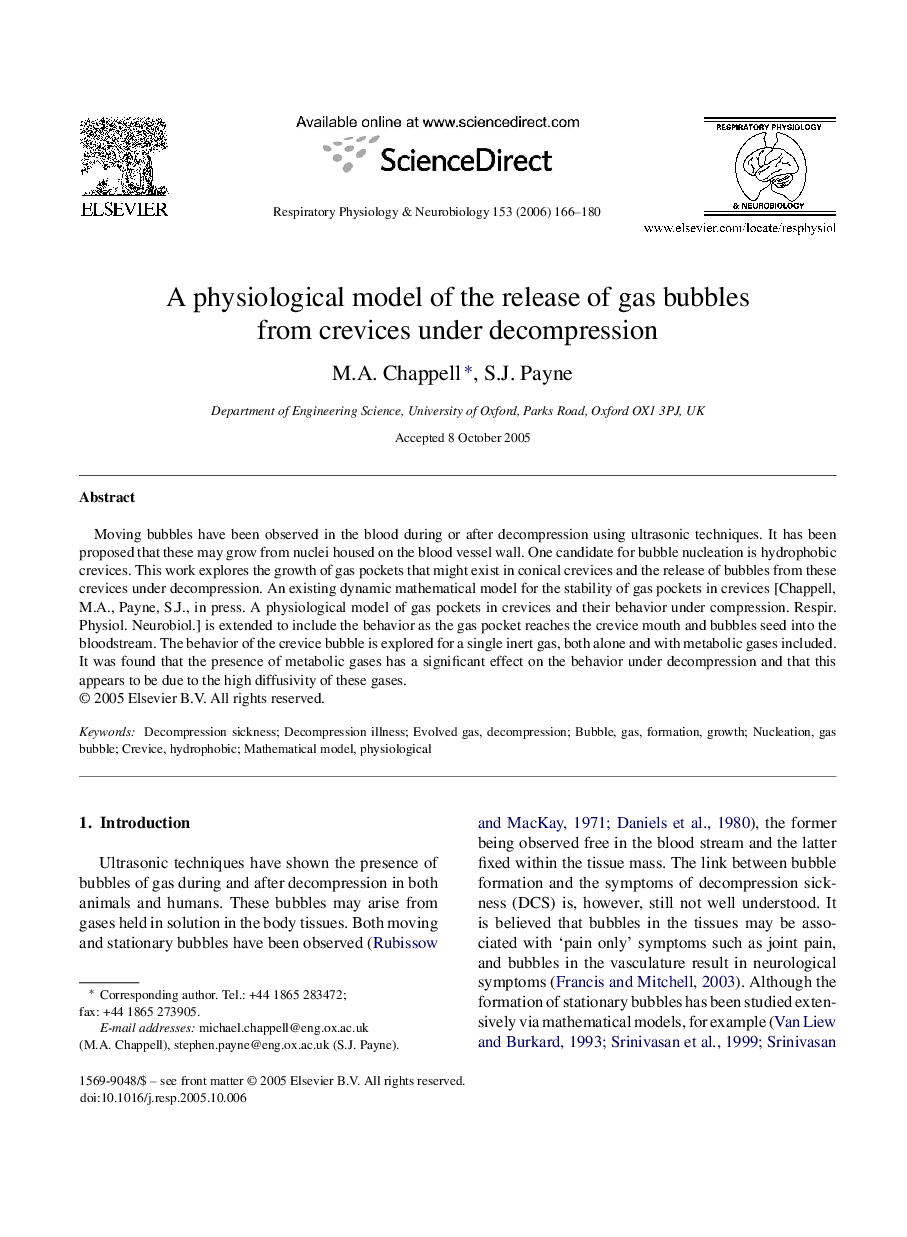| Article ID | Journal | Published Year | Pages | File Type |
|---|---|---|---|---|
| 2848657 | Respiratory Physiology & Neurobiology | 2006 | 15 Pages |
Moving bubbles have been observed in the blood during or after decompression using ultrasonic techniques. It has been proposed that these may grow from nuclei housed on the blood vessel wall. One candidate for bubble nucleation is hydrophobic crevices. This work explores the growth of gas pockets that might exist in conical crevices and the release of bubbles from these crevices under decompression. An existing dynamic mathematical model for the stability of gas pockets in crevices [Chappell, M.A., Payne, S.J., in press. A physiological model of gas pockets in crevices and their behavior under compression. Respir. Physiol. Neurobiol.] is extended to include the behavior as the gas pocket reaches the crevice mouth and bubbles seed into the bloodstream. The behavior of the crevice bubble is explored for a single inert gas, both alone and with metabolic gases included. It was found that the presence of metabolic gases has a significant effect on the behavior under decompression and that this appears to be due to the high diffusivity of these gases.
